Driving the Porsche 911 GT3 in Heavy Rain: How Far Can Cup Tires Go?
公開日:2019.07.27
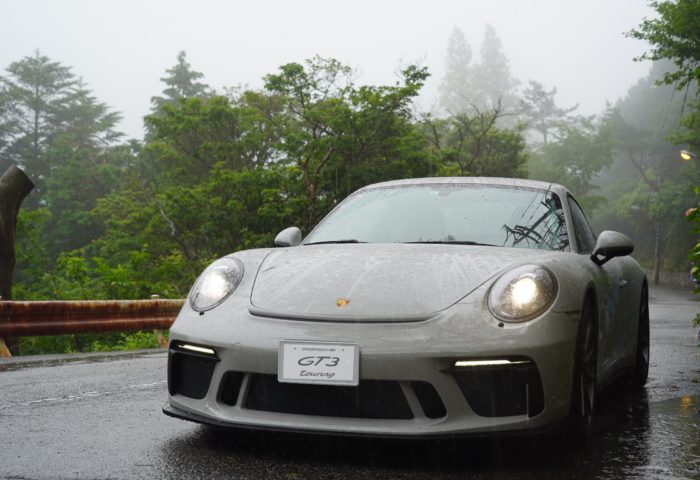
This time, my husband wrote an article about driving the GT3 in the rain in early July. Please take a look if you’re interested.
One Month Since GT3 Delivery…
This year, the rainy season started quite late in the Kansai region, but finally, the full-on rainy season has arrived. It’s been over a month since the GT3 was delivered, and to test its performance in wet conditions, we decided to deliberately take the GT3 out to Rokko in heavy rain. (Normally, no one would do such a thing…)
On the day, checking the weather forecast app on my smartphone showed heavy rain expected. The rain cloud radar indicated bright red rain clouds approaching the Rokko mountain range, with rainfall expected at 30–50mm/h. We hurriedly got ready and got into the GT3.
The perfect test environment.
By the way, I proudly call myself a “bad weather driving enthusiast”, and I actually quite enjoy driving in rain and snow (laughs).
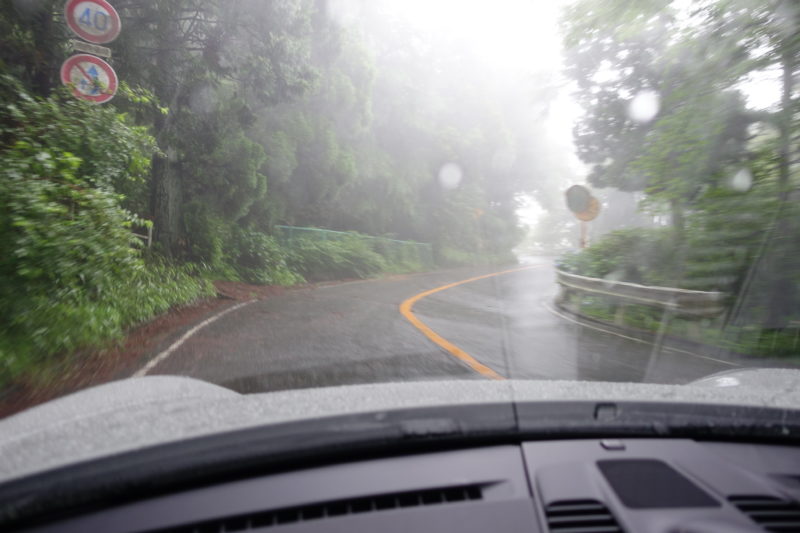
This time, the main point I wanted to check was the wet performance of the Michelin Pilot Sport Cup 2 tires that came factory-fitted on the GT3. I enjoy long-distance touring, so encountering sudden heavy rainstorms is not uncommon. That’s why I wanted to know how capable these tires really are in wet conditions.
By the way, when talking about wet tire performance, there are basically two key factors.
The first is grip on wet roads. The second is water drainage performance (resistance to hydroplaning). Even after checking Michelin’s website and technical tire info, I found it hard to find clear distinctions between these two aspects—they’re often lumped together as “wet performance.” I wanted to clarify this.
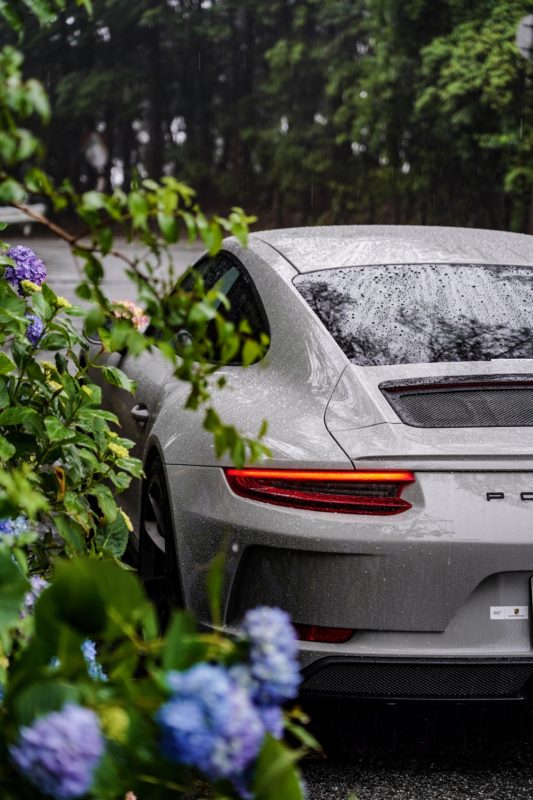
Driving the GT3 in Heavy Rain
We took Route K16 (Akashi-Kobe-Takarazuka Line, commonly called the “East Rokko Driveway”) heading up to the Rokko summit. If you’re driving here on a weekend, it’s best to go before 8 a.m. After 8 a.m., minivan drivers start heading up Rokko, and you end up stuck behind a safety car pace the whole time.
However, since it was heavy rain that day, traffic was almost nonexistent—practically a private road.
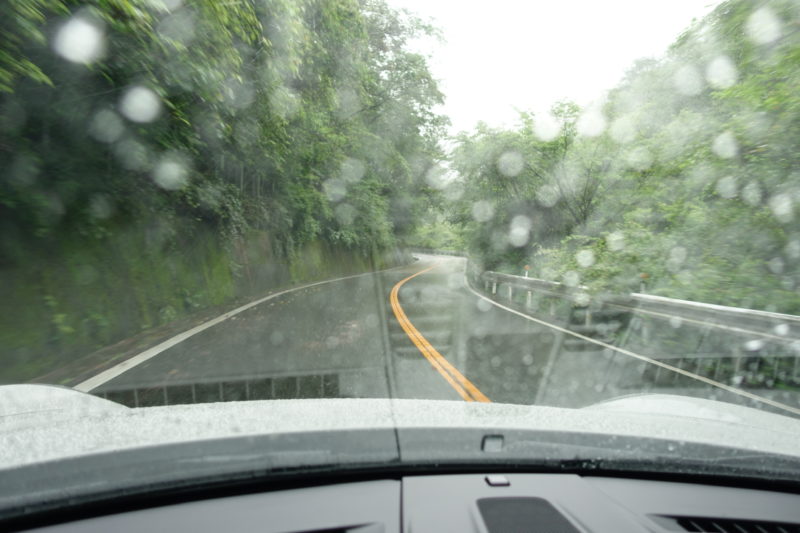
Cautiously increasing the pace, I tested the feel of the Cup tires.
For normal driving, there was absolutely no problem. They felt no different from regular tires at all. Next, I pushed the pace a bit and applied lateral G in corners. Even then, the grip was surprisingly normal.
Wow, they actually handle pretty well.
Even at a slightly faster pace on public roads, there was no issue. When accelerating hard out of a corner in 2nd gear, the rear did slip a bit, but the PSM quickly intervened.
Regarding wet grip, I felt that as long as you drive at reasonable speeds on public roads, these tires are safe to use. So, you don’t need to be overly nervous even if caught in sudden heavy rain. (But be cautious in cold winter conditions.)
From my experience, the tire with the best wet grip was the Goodyear Eagle F1 Asymmetric 2. Even on the mid-engined Boxster, I felt very confident driving aggressively on the wet Fuji Skyline during heavy rain. Compared to that, the Cup 2 is somewhat inferior, but still offers more than enough performance.
Next, I tested drainage. The Pilot Sport Cup 2 is a so-called shallow tread tire. Even new, it only has 5.4mm of tread depth, noticeably less than the typical 7–8mm on regular tires. However, it’s said to have about 23% deeper grooves than the previous generation Sport Cup.
Since testing drainage by speeding on the highway would be risky, I instead tried to feel changes in road contact on public roads where water flowed like a river.
First, on roads with just a few millimeters of water, the feel was no different from dry pavement. There was no hydroplaning or steering instability. I imagine on modern permeable pavement used on many highways, these tires would handle moderate rain just fine.
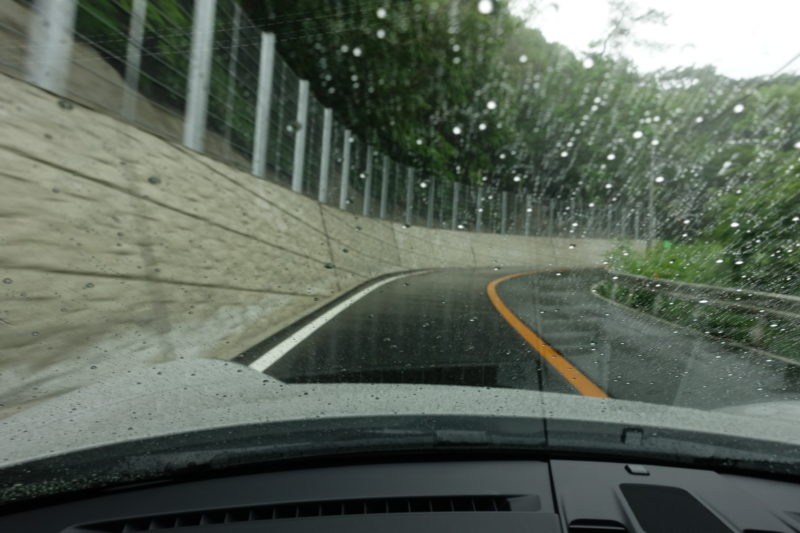
On the other hand, on obvious puddles or roads with flowing water, the steering was more easily affected. Since the Cup 2 tires lack longitudinal grooves on the outer edges, extra caution is needed in corners. Subjectively, if the steering stability of regular tires is rated 10, these feel around 5 to 7. So, when driving on wet highways, depending on conditions, it’s best to keep speeds around 80–90 km/h and watch out for large puddles.
Especially on highways where the pavement suddenly changes from permeable to regular, you should be extra careful. Permeable pavement can encourage speeding, but the moment you hit regular pavement, hydroplaning risk rises sharply.
Summary
Before testing, I thought these tires would be more unstable in the rain, but for normal driving, you don’t need to be overly concerned about wet grip. They are perfectly usable even in sudden rain or bad weather during long-distance tours.
On the other hand, due to fewer and shallower grooves, you should be more cautious about drainage performance.
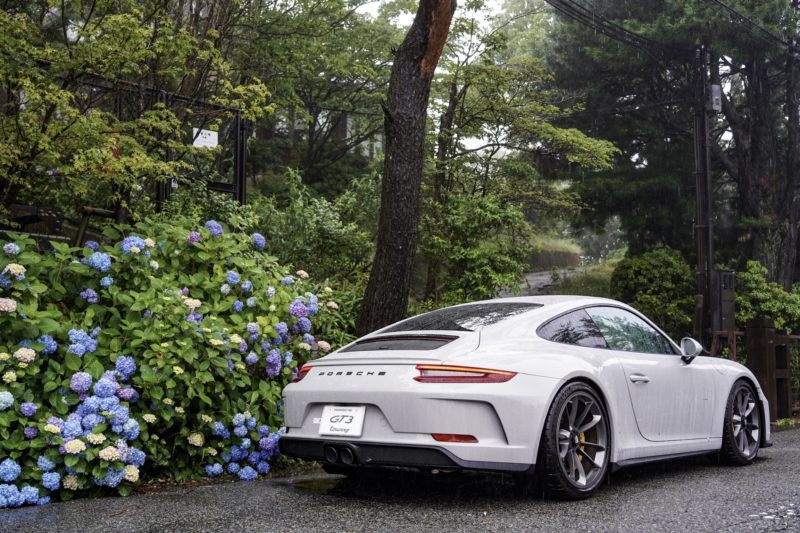
I had planned to switch to the more all-around Pilot Sport 4S soon, but it seems I can wait a bit longer with these. I’ll wait until the tread wears down a bit more and I’ve experienced more varied conditions before making the change. If I discover anything new, I’ll share an update review.
このブログが気に入ったらフォローしてね!


Comment ( 0 )
Trackbacks are closed.
No comments yet.